Everyone knows that not all insect species are harmful to gardens. Few people though can recognize the ones that are truly beneficial, apart from the well-known butterflies and ladybugs.
In fact, there is a wide variety of species that can help your garden to thrive. There are three main kinds of beneficial insects: pollinators, predators and parasitoids, and decomposers.
Pollinators are essential for the reproduction not only of flowers but also of many of the most commonly grown vegetables and fruits.
Bees are not the only pollinators, since moths, butterflies, and flies also carry out this important function.
Predators and parasitoids are especially useful to control pest insects without using chemical substances that are harmful to the ecosystem.
Ladybugs, lacewings, and praying mantises all feed on a wide range of insects, while some wasps are useful parasites.
Finally, decomposers are often overlooked, but they are essential to turn organic matter into fertile humus that enriches the soil and makes important minerals available to plants.
- Related article: Identify Garden Insects
Let’s look at some of the most beneficial insects for your garden.
1. Ladybugs (Coccinellidae Family)
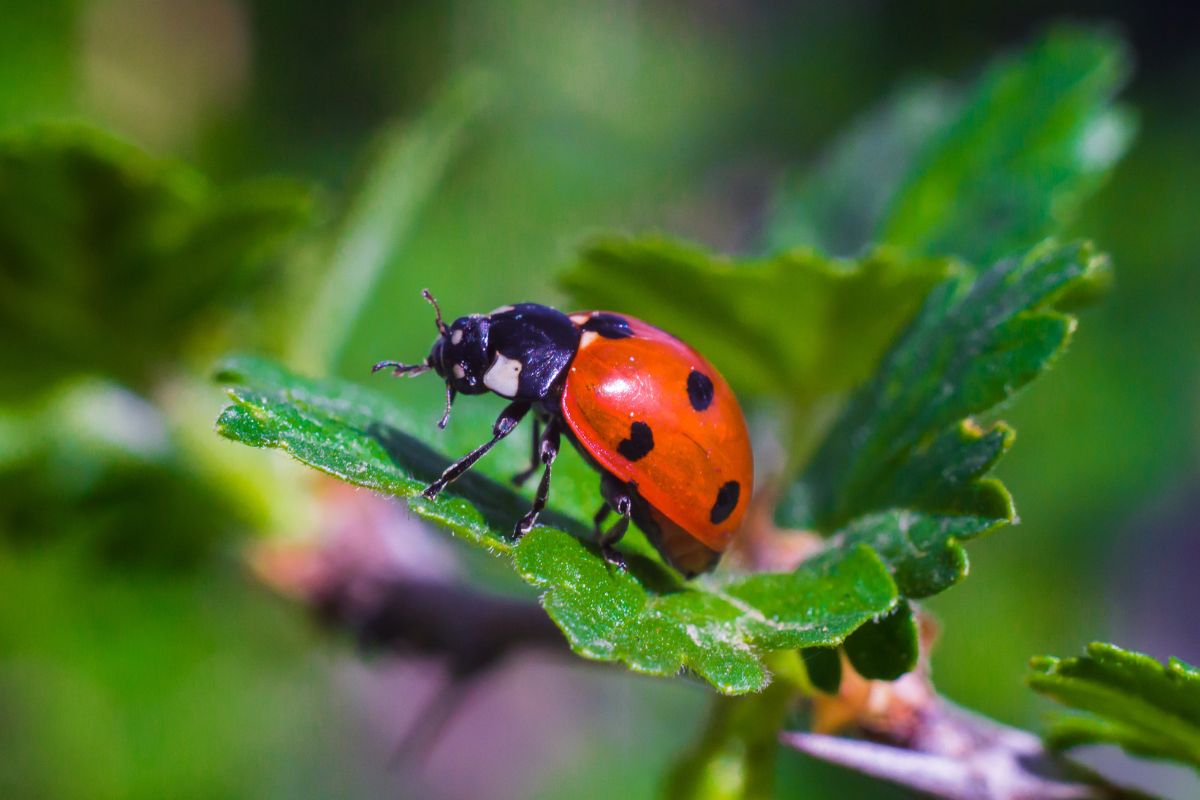
Ladybugs are predatory beetles that feed mainly on aphids and spider mites. Occasionally they also consume other bugs, such as thrips, whiteflies, scale, and mealybugs.
Lady beetle larvae have an elongated, dark-colored body with orange and yellow markings.
They are probably the most popular garden insect, also because of their appearance. Despite their cuteness, they are ferocious predators that digest their victims by secreting saliva.
Ladybugs can eat up to 5,000 aphids, just in the larval stage. Keep in mind that if there is no prey available, these insects may feed on pollen.
If you want to attract ladybugs, consider planting fennel, alyssum, tansy, potentilla, and yarrow.
Check out more Ladybug Fun Facts.
2. Green Lacewings (Chrysoperla carnea)
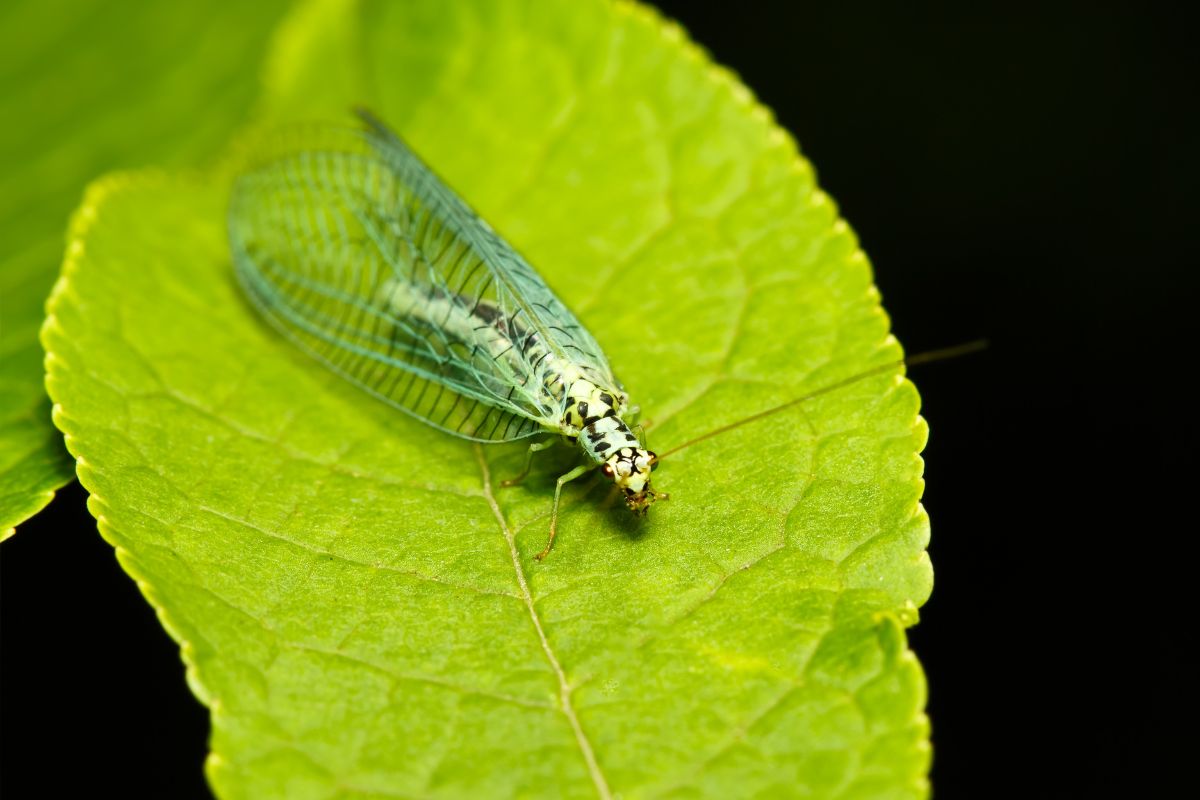
The Green Lacewing is also known as “Aphid Lions”. They are voracious predators, as these tiny insects are their favorite prey.
They also feed on insect eggs and other bugs, such as mealybugs, mites, thrips, and white flies.
The females lay their eggs directly on top of aphids and other soft-bodied insect pests which act as their host insects. The lacewing larvae will then feed on these for days to get the nutrients that they need to survive.
The larvae are wingless and much more voracious than the adults, which don’t eat much. Adult lacewings are easily recognizable thanks to their long transparent wings.
These fierce predators are nocturnal animals, so you won’t see them hunt during the day. If you want to encourage their presence, the advice is to have yarrow, dill, angelica, coriander, cosmos, fennel, and dandelion in your garden.
3. Praying Mantis (Mantodea Order)
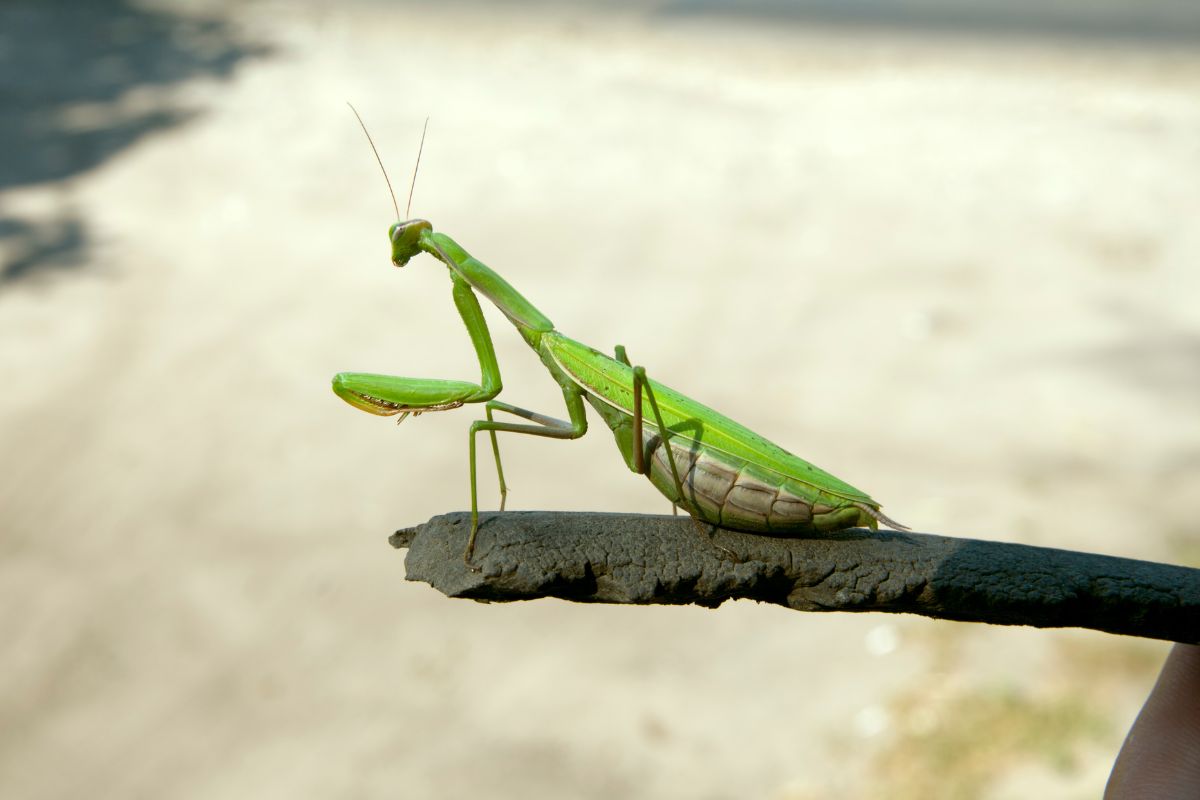
Praying Mantis are predators that can feed both on harmful and beneficial insects. For this reason, there is some controversy over whether their presence should be encouraged.
For the most part, it seems that their effect is positive, as they control the populations of grasshoppers, moths, beetles, flies, spiders, aphids, and crickets.
Occasionally, they might also eat mice, lizards, frogs, and sometimes even hummingbirds.
There are numerous species of praying mantis, but the most common ones in the United States are the European mantis, the Carolina mantis, and the Chinese mantis.
Praying mantis are attracted to roses and raspberry shrubs.
4. Spiders (Arachnida Class)
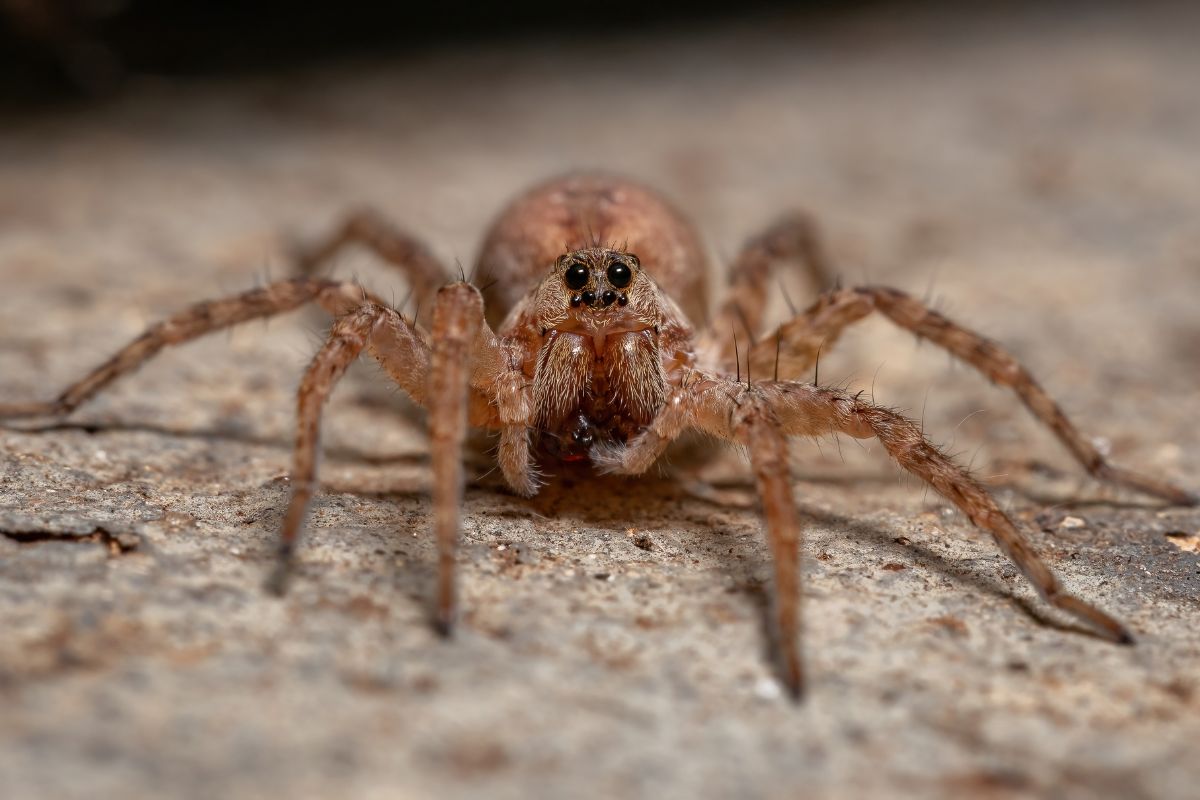
Spiders are not technically insects, but arachnids. Most likely you wouldn’t have thought of them to be beneficial insects, but they can be very helpful for the garden.
They are common predators that eat many wide ranges of insects that can ruin your vegetables and ornamental plants, such as aphids, wasps, beetles, mosquitoes, and flies.
Spiders are actually the most widespread land predators and they are some of the most efficient, as they start to feed on garden pests very early in the spring and keep on going throughout the summer.
The best at their job are wolf spiders and jumping spiders. You can attract wolf spiders by having grass clippings in your garden, which will provide them with an ideal hunting ground.
Garden spiders are instead drawn to perennials and bushes where they build their webs.
5. Ground Beetles (Carabidae Family)
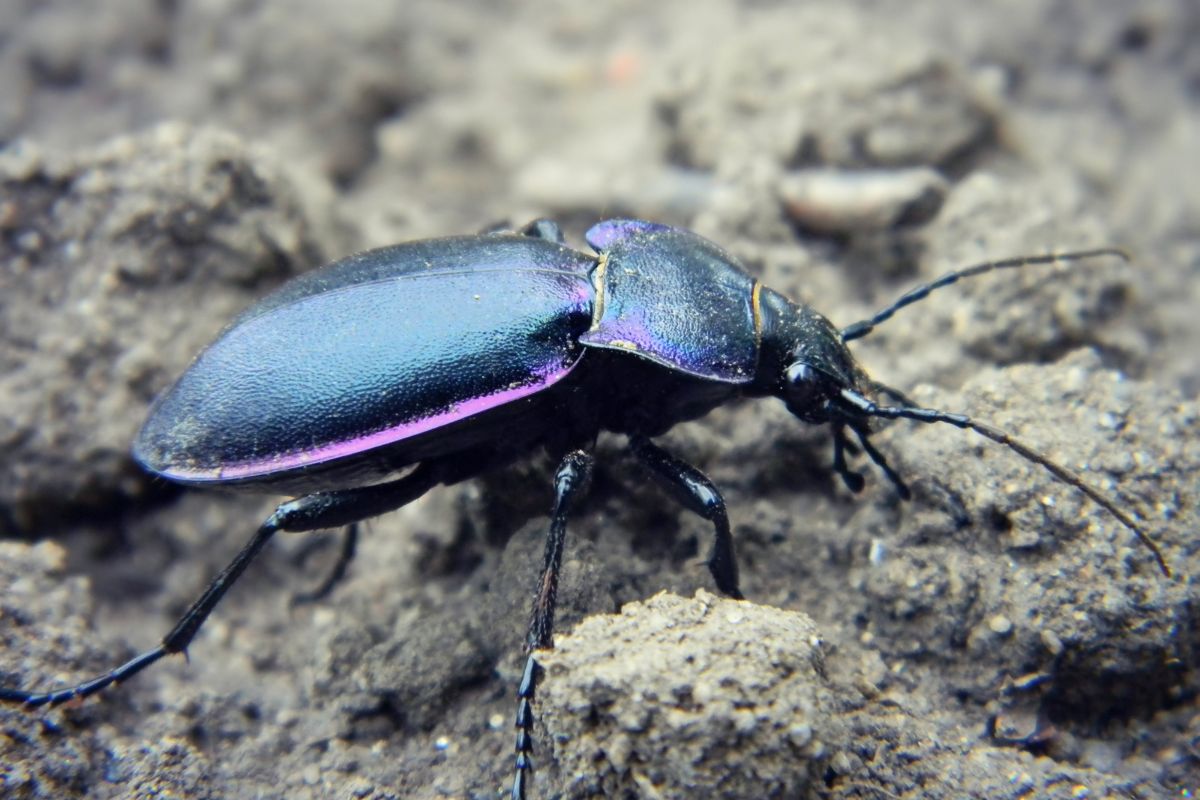
Ground beetles are a large group of predatory beetles. They are especially helpful because they hunt slugs and snails, as well as nematodes, caterpillars, thrips, weevils, and silverfish.
Ground beetles have an interesting hunting technique, as they release their digestive enzymes directly on their prey by vomiting on them.
Of course, some beetles can be harmful, such as Japanese beetles, but many of them aren’t and their presence should be encouraged. You can achieve this by having a shaded area available to them in your garden.
This is because they are nocturnal animals that need a cool and sheltered area during the day. A simple pile of leaves, stones, or logs will suffice.
6. Parasitic Wasps (Hymenoptera Order)

Parasitic wasps don’t sting, so they aren’t dangerous for humans, though they very much are for pests.
The female wasp lay eggs that hatch on or in other insects. The larvae then proceed to feed on their live victims until their death. These include caterpillars, sawflies, ants, and aphids.
Parasitic wasps are very small, so it’s almost impossible to spot them in your garden.
The braconid wasp is one of the most efficient predators, as it parasitizes the destructive tomato hornworm. This species also pollinates, even if it isn’t as efficient as bees.
Trichogramma wasps are also good friends of gardeners, as they are egg parasites that kill off harmful pests before they are even born.
Many plants can be used to attract these helpful parasitic wasps, such as yarrow, dill, mallow, cosmos, lobelia, alyssum, cinquefoil, and marigold.
7. Soldier Beetle (Cantharidae Family)
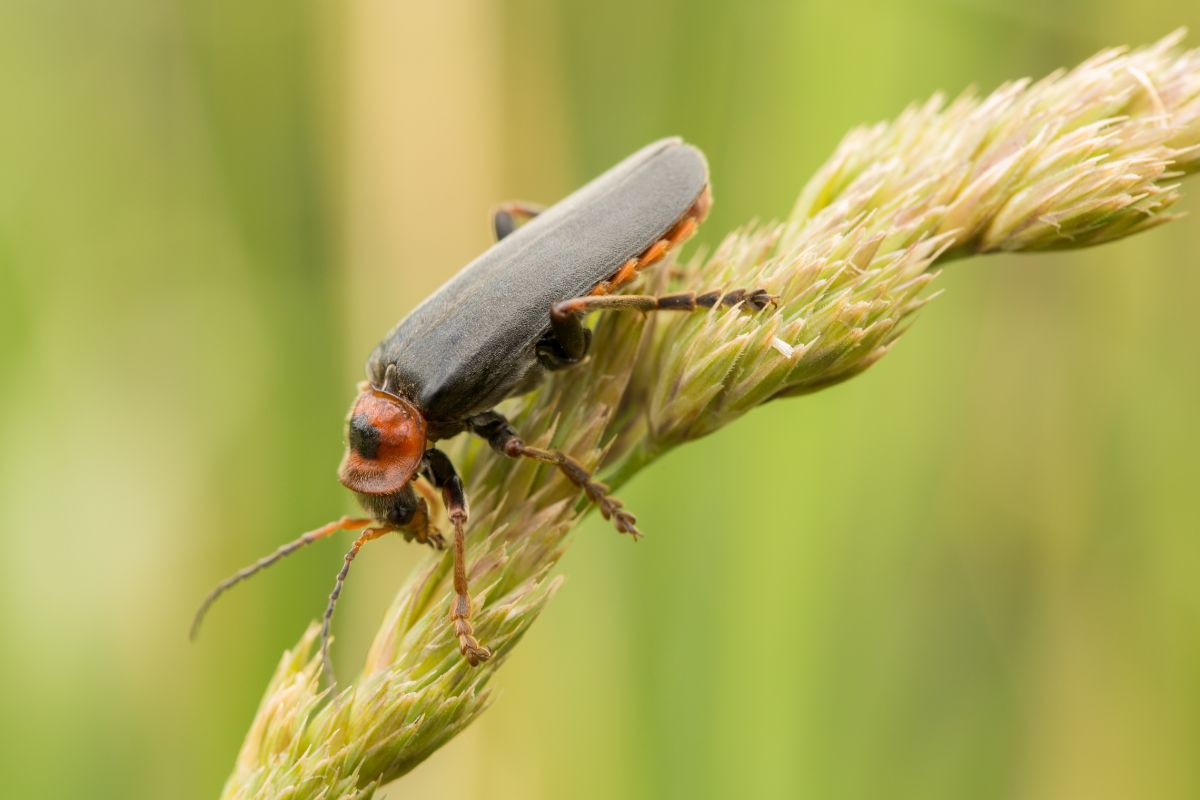
Soldier beetles, also known as leatherwings.
They are both useful pollinators and effective predators of pests such as Mexican bean beetles, Colorado potato beetles, caterpillars, aphids, and other soft-bodied insects. They also feed on insect eggs.
Soldier beetles resemble fireflies and when in flight can sometimes be mistaken for wasps. You can easily learn to recognize them with just a little bit of observation.
They can be identified thanks to the black spot they have on each wing and their yellow-tan color.
They can be seen in early spring as they fly from flower to flower, especially goldenrod, Queen Anne’s lace, zinnia, and marigold. They also love daisies and linden trees.
Soldier beetles are particularly appreciated as garden insects since they do not bite or sting humans.
8. Bumblebee (Bombus Species)
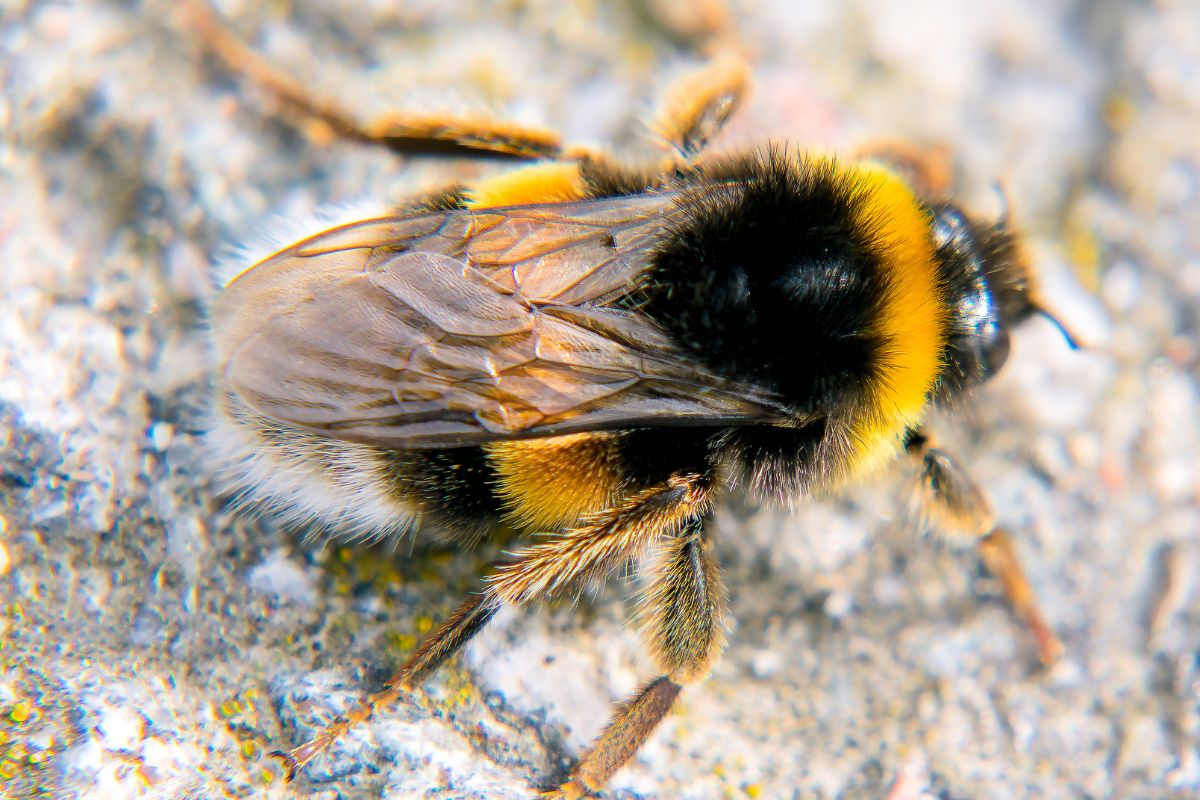
Even if it’s not as famous as the honeybee, the bumblebee is also very useful in the garden.
Like other bees, it’s a wonderful pollinator and it normally doesn’t sting humans. It becomes aggressive only if threatened.
Each species of bumblebee has its own flower preferences. Some prefer large, single flowers rich in nectar and pollen, while others favor flowers that form long tubes, such as honeysuckle, delphiniums, and catmint.
In general, it’s always a good idea to have both early and late blooming flowers in your garden, so that bumblebees and other pollinators will have a continuous supply of food and won’t have to leave to look for more.
9. Solitary Bees (Hymenoptera Order)
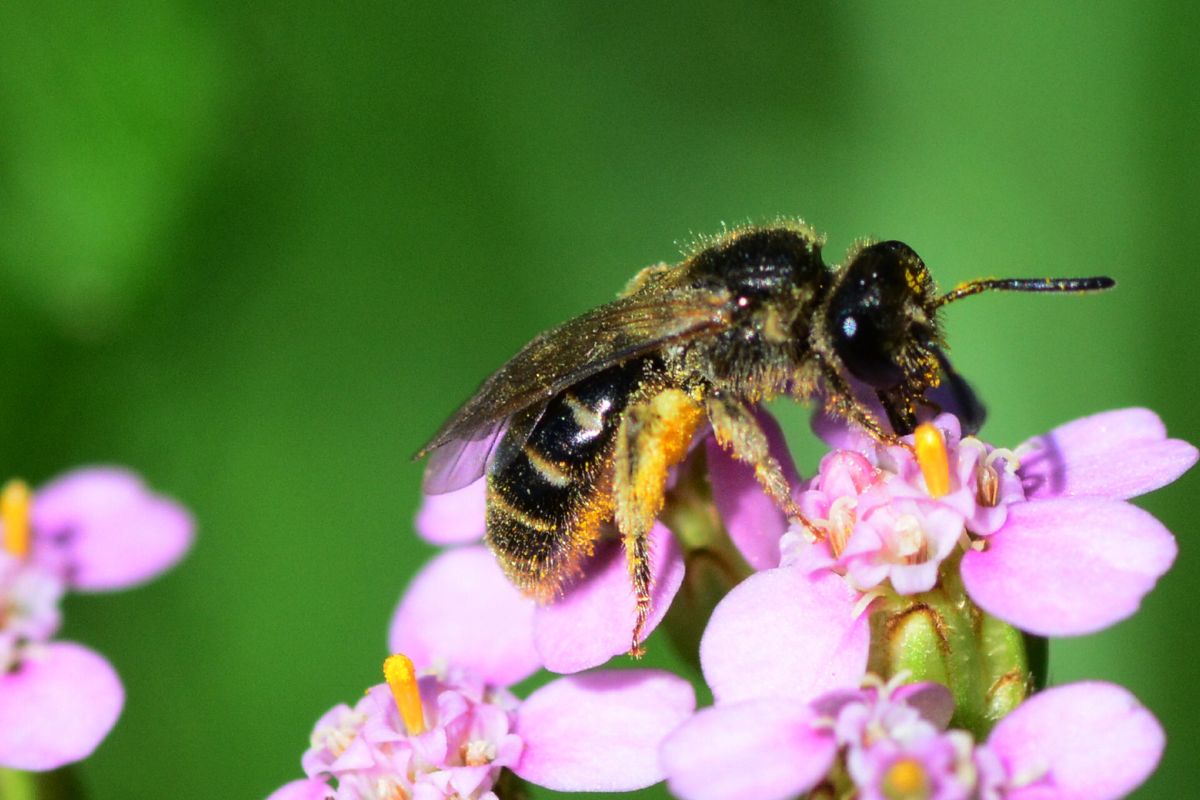
Solitary bees do not live in colonies like honeybees and most wasps do.
They can look very similar to honeybees in appearance, with a few differences. For instance, they don’t have pollen baskets but carry pollen on their legs.
Most species of solitary bees build their nests by digging in pieces of wood, but others use plant stems or even empty snail shells.
After releasing the eggs in the nests along with a supply of pollen and nectar, these bees leave their young alone.
Solitary bees are lured by lavender, fuchsia, heather, viburnum, marjoram, and cat mint.
10. Butterfly (Lepidoptera Order)
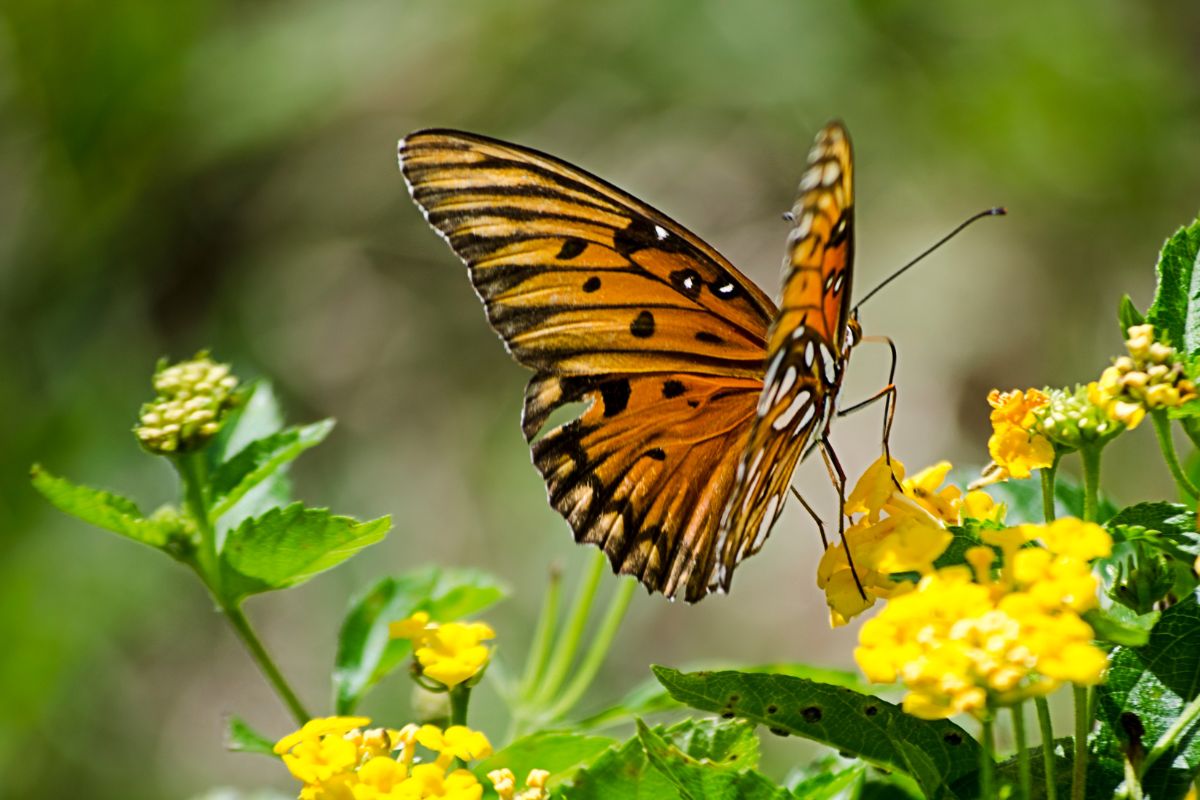
Butterflies are loved by even the most insect-hating person, just because of their stunning colors.
Other than being delightful additions to any garden, they are also wonderful pollinators.
They start their life as eggs, which then hatch into larvae called caterpillars. At this stage, they can sometimes feed on garden fruits and vegetables, especially brassicas.
As they mature though, the caterpillars go through the metamorphosis process, becoming first chrysalises and finally the beneficial pollinator butterflies.
Other than being efficient pollinators, butterflies are also important prey for birds and bats. You can attract them with buddleia, marjoram, and lavender.
11. Hoverflies (Syrphidae Family)
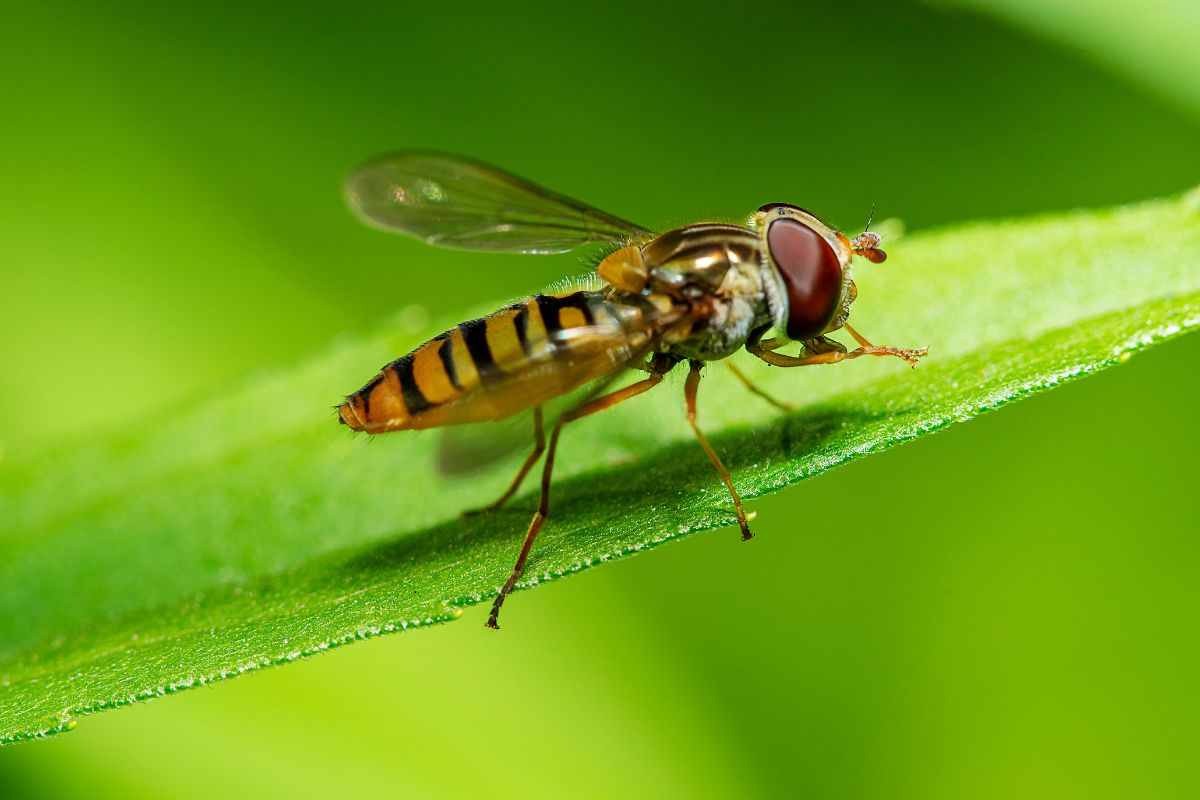
Hoverflies belong to the order Diptera. There are over 6000 different species of them in the world.
Some are excellent biological control agents, as they feed on quantities of aphids and thrips, especially at the larval or immature stage. Other larvae feed instead on decaying organic matter, while the adults are mainly pollinators.
They’ve earned their name because of the way they can be seen hanging around flowers to look for pollen and nectar.
Some people confuse hoverflies with wasps because they are also black and yellow, but compared to them, hoverflies have shorter antennas and flat abdomens.
They also do not sting, unlike most wasps.
If you want to attract hoverflies to your garden, consider planting yarrow, alyssum, dill, cosmos, mallow, poached egg plant, lemon balm, potentilla, and marigold.
Best Beneficial Insects Final Thoughts
Beneficial insects are a vital part of any garden. They help keep common pest insects under control, prevent disease, and improve soil quality.
This means that you won’t have to spend hours spraying harmful chemicals to keep your plants safe from harm.
In fact, studies show that having beneficial insects around actually helps plants grow faster and produce more fruit than without them.
There are hundreds of beneficial species of insects available, each with its own unique set of characteristics.
So whether you want to attract butterflies, ladybugs, bees, wasps, or beetles to your garden, the list above is the best beneficial insects to look for.
Did this article excite your brain? Read on for more articles about insects:
- Beneficial Compost Insects
- Beneficial Predatory Insects
- Beneficial Insect House
- Beneficial Bugs for Houseplants
Sources:
- https://extension.umn.edu/yard-and-garden-insects/beneficial-insects
- https://landscapeipm.tamu.edu/what-is-ipm/ipm-concepts/pest-identification/good-bug-bad-bug/beneficials/
- https://sfyl.ifas.ufl.edu/sarasota/gardening-and-landscaping/horticulture-commercial/integrated-pest-management/beneficial-insects/
- https://dnr.maryland.gov/wildlife/Documents/Beneficial_Bugs.pdf
- https://www.ncbi.nlm.nih.gov/pmc/articles/PMC8313545/
- https://www.austintexas.gov/sites/default/files/files/Watershed/growgreen/factsheets/beneficials.pdf

